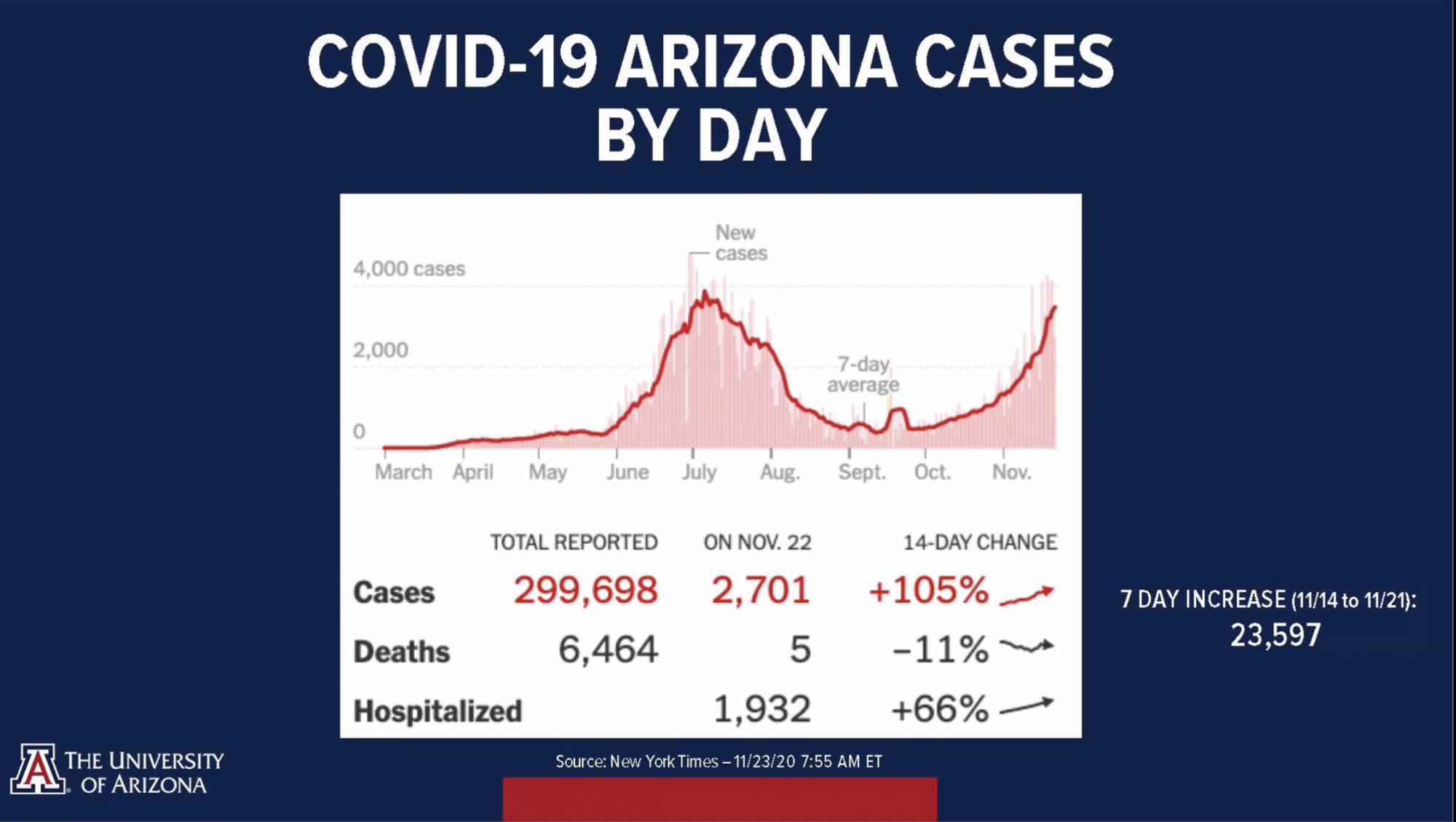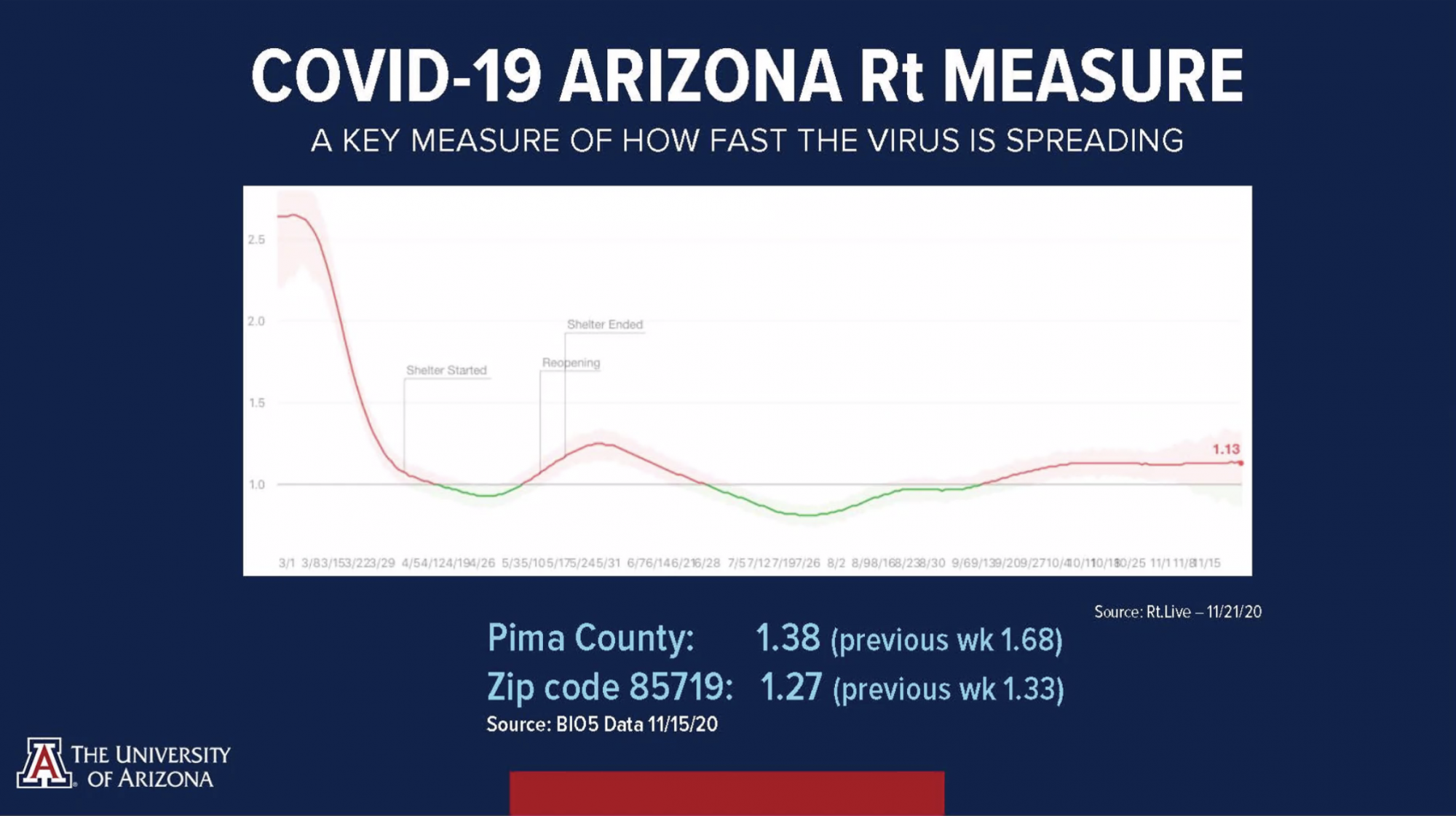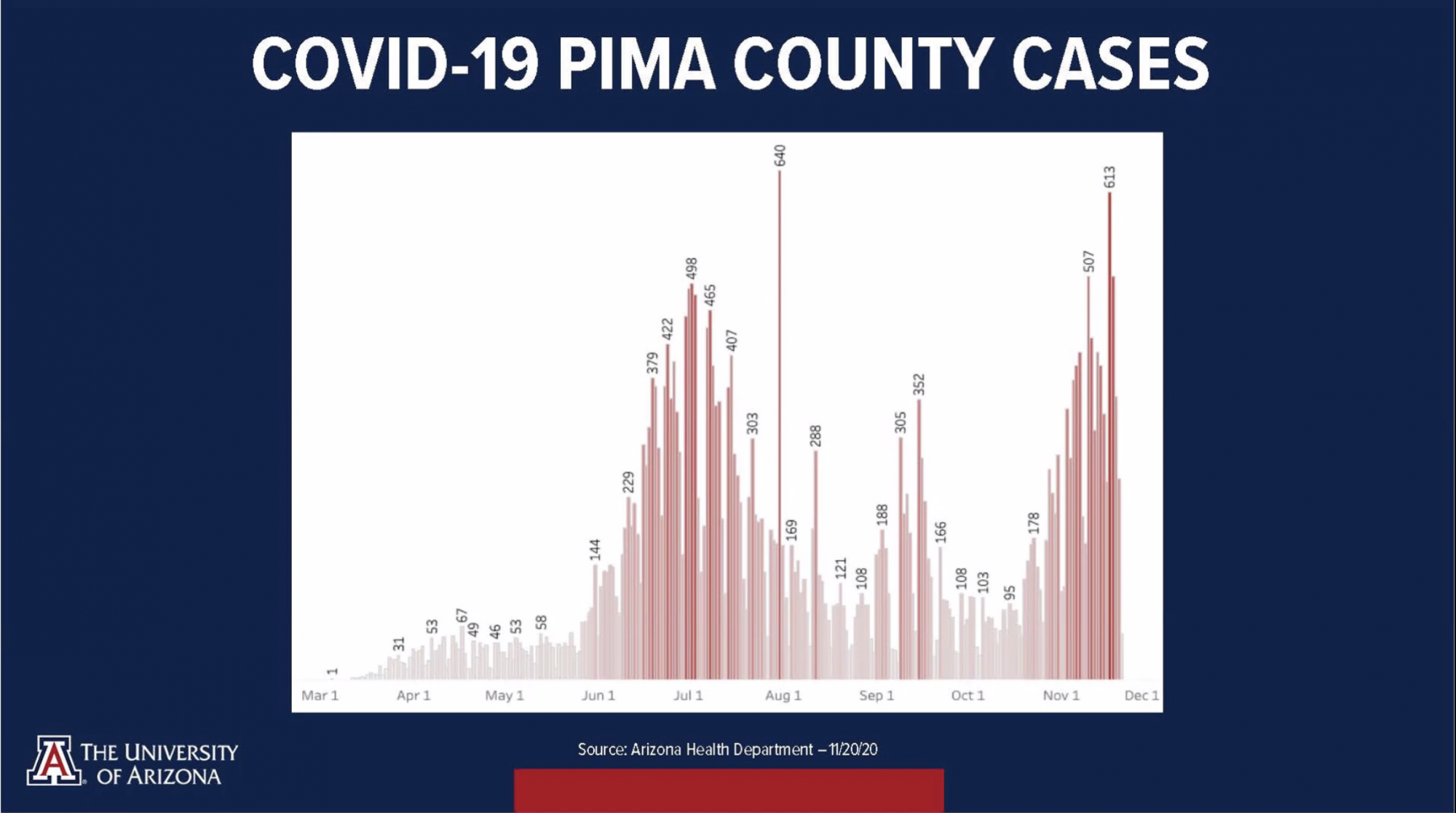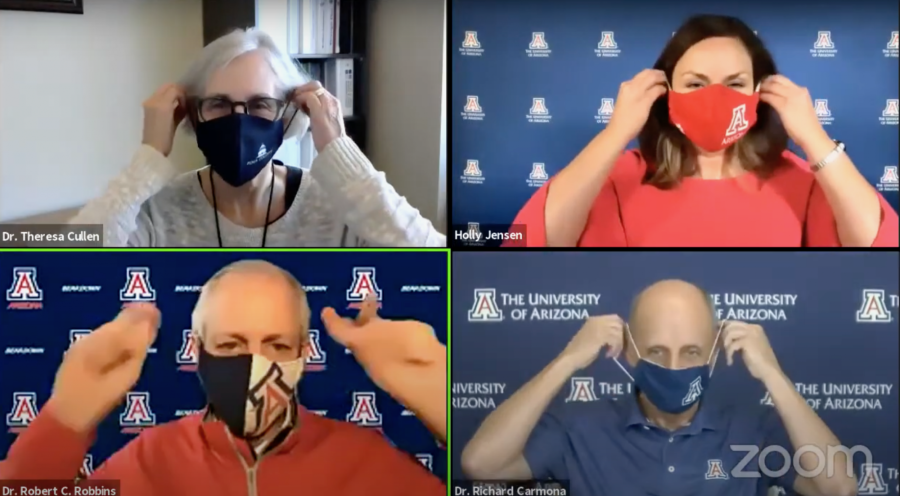The University of Arizona’s COVID-19 reentry task force met Monday morning to discuss their concerns and efforts to mitigate the spread of COVID-19 as the holiday season approaches.
UA President Dr. Robert C. Robbins again emphasized the university’s plan for students to continue the remainder of the semester virtually starting the week after Thanksgiving break.
When students return for the spring semester, the university will continue in Phase 2 of reentry, allowing classes of 50 or fewer that are designated as in-person or flex-in-person to meet. However, Robbins stated that if cases continue to rise, regressing to Phase 1 is a possibility.
Robbins began the meeting by commending everyone who contributed to the logistics of testing as part of the testing blitz leading up to holiday travel. He emphasized that the numbers of both on and off-campus students and employees tested have gone up as part of the blitz.
“Last week we administered a total of 6,869 tests from Monday, Nov. 16, to Friday, Nov. 20, with 91 positives. 4,048 of the tests administered in the past week were for off-campus students,” Robbins said.
In non-COVID-19 related news, Robbins also discussed efforts from the university to support students during this time such as a free Thanksgiving meal program available to students staying in the Tucson area. In hopes of addressing the concerns of students entering the job market, Robbins promoted the Bear Down Network, a social media platform with the intention of fostering increased communication and support within the UA community.
Transitioning to the recent data on COVID-19 cases, task force director Dr. Richard Carmona expressed worries that the numbers are moving in the wrong direction.

Arizona cases increased by 105% in the past 14 days, which raised concerns as winter approaches and travel from “Snowbirds” — older travelers attracted to Arizona by warmer weather — increases. While the deaths dropped by 11% within the 14-day period, Carmona predicted that may change with the influx of these older travelers who represent a vulnerable population.
The county, state and nation are all experiencing a common trend of increasing cases as the common holidays for travel approach.

The Rt — a measure that reflects the transmission of the virus — went down from the previous week dropping from 1.33 to 1.27 in the 85719 zip code area. However, Carmona emphasized that this is still above the desired Rt value of under one.
CART deployment was also down and testing up, but Carmona urged against complacency: a message echoed by the rest of the task force. He also brought attention to mental health issues associated with the pandemic that are not seen as hard data points on graphs.
“The mental health consequences of this are very significant,” Carmona said. “We mention it every week but it’s something that’s hard to measure. It’s not a hard number like beds and yet it is very important that the nation is suffering from this [COVID-19] exhaustion. And most importantly our front line first responders and health professionals are suffering from this mental exhaustion as well.”
Pima county health director Dr. Theresa Cullen discussed data at the county level. She reported an average daily case rate of 439 based on the past seven days, an increase compared to that of June or July which she estimated at around 300.

“Yesterday we reported the highest number of cases we have ever reported in Pima county,” Cullen said. “On Friday, we had the highest particulate of SARS Cov2 virus in the waste water in the Tucson area that we have recorded since we started recording which is March.”
Citing the success of the voluntary shelter in place held by the university in September, Cullen mentioned a limited curfew, saying more information on the subject would be released in the coming days.
The task force briefly addressed questions regarding news of vaccines. Both Robbins and Cullen emphasized that a vaccine is not a cure all and is not yet readily available. Robbins encouraged people to continue following rules and practicing safety at an individual level.
The Pfizer vaccine requires temperature conditions around -80°C for storage. Because of this, Cullen stated the county is working on preparing “freezer farms” and plans on how to most effectively distribute the vaccine, starting at Banner and Tucson Medical Center.
According to Cullen, the county is hoping to see more movement of vaccine plans in early December. Seeing as health care workers are prioritized, she estimated more widespread availability of the vaccine will not occur until late spring or early summer.
Robbins concluded the meeting by urging everyone to take great precautions while traveling and throughout the holiday season.
“It’s going to be exponentially hard for everyone,” Robbins said. “Especially when we’re saying you can’t interact with your support system because it’s too dangerous. Be careful. Follow the steps. Quarantine when you get home.”
Follow Hillary Schiff on Twitter









